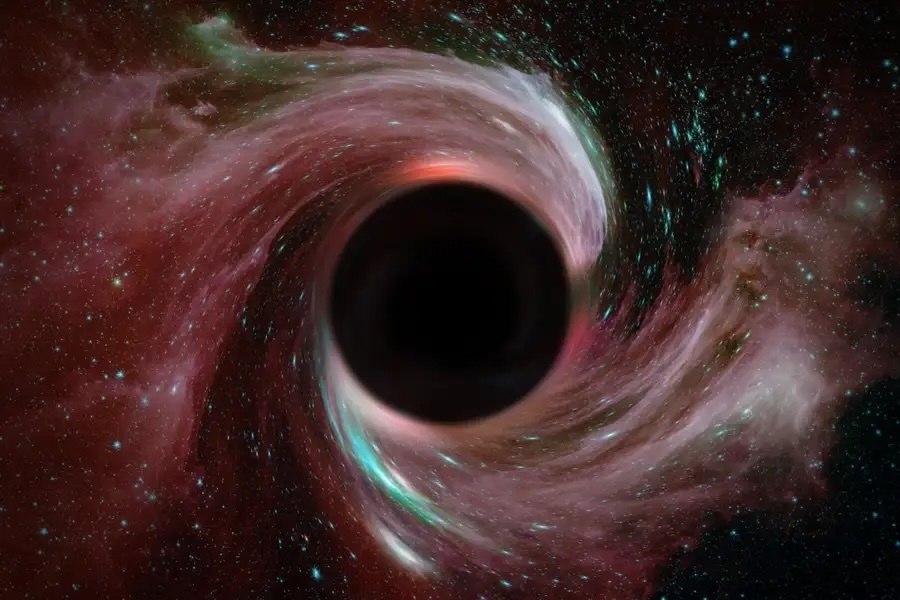17.05.2024
For the first time, astronomers have observed the area right at the edge of a black hole where matter stops orbiting and plunges straight in at near light speed

We’ve seen the waterfall of matter plunging into a black hole
Buradaki / Alamy Stock Photo
A strange area around black holes called the “plunging region” has been spotted for the first time. This area, where matter stops circling a black hole and instead falls straight in, was predicted by Albert Einstein’s theory of general relativity, but it has never been observed before. Studying plunging regions could teach us about how black holes form and evolve, as well as reveal new information about the fundamental nature of space-time.
When any matter gets too close to a black hole, it rips apart and forms an orbiting ring around it called an accretion disc. General relativity predicts there should be an inner boundary to the accretion disc past which nothing can orbit the black hole – instead, it should plunge straight in, rapidly accelerating to near the speed of light as it falls.
“It’s like a river turning into a waterfall, and until now we’ve only been looking at the river,” says Andrew Mummery at the University of Oxford. “If Einstein was wrong, then it would be stable all the way down – there would only be a river.” Now we’ve gotten our first peek at the waterfall, suggesting Einstein was correct.
Mummery and his colleagues spotted evidence of the plunging region around a black hole in a binary system called MAXI J1820+070, which is about 10,000 light years from Earth. They used data from the Nuclear Spectroscopic Telescope Array (NuSTAR), a space-based X-ray telescope, to build models of the light from the black hole’s accretion disc.
They found the models only fit the data when they included the light emitted by matter in the plunging region in addition to light from the accretion disc. “Before, we sort of thought that anything that crosses this boundary would have no time to really radiate appreciably before it plunges into the black hole”, so researchers wouldn’t see anything, says Greg Salvesen at Los Alamos National Laboratory in New Mexico, who was not involved with this work. “But it turns out that this plunging region gives you extra light that you wouldn’t have expected.”
This extra light could solve a long-standing problem in X-ray astronomy, in which black holes appear to be spinning faster than theory predicts. The spin of a black hole and the brightness of the area around it are connected, so adding some extra light could bring the spins back in line with predictions. “Black hole spins tell us about all kinds of things, so if we could measure it better, we could answer loads of questions in astrophysics,” says Salvesen.
That includes questions about the nature of gravity and space-time itself, because plunging regions are some of the most extreme regions of space we can observe. The plunging region is just outside the event horizon, beyond which the gravitational forces are so strong, no matter or even light can escape.
“Technically, if the matter had a rocket it could escape the plunging region, but it’s doomed – its orbit has become unstable and it’s rapidly accelerating toward the speed of light,” says Mummery. “This stuff has about as much chance of coming back as water off the edge of a waterfall.” The researchers are now trying to make more observations of these strange cosmic waterfalls to illuminate the conditions in these extraordinary areas.
Quelle: NewScientist
